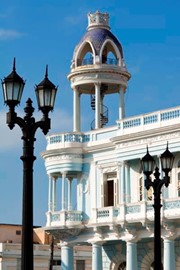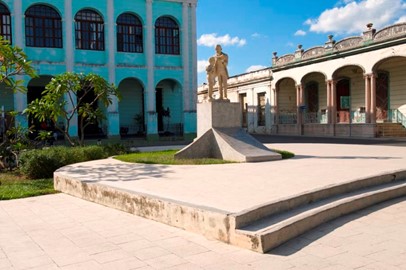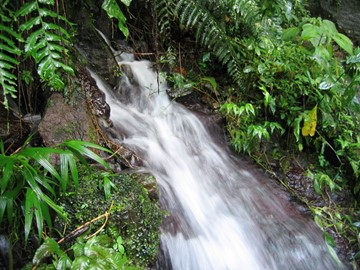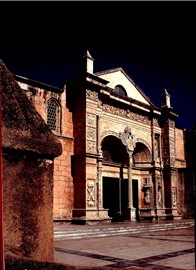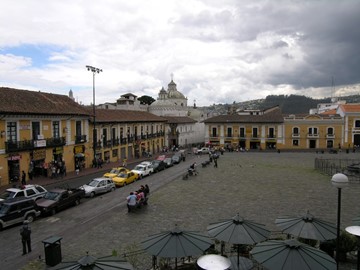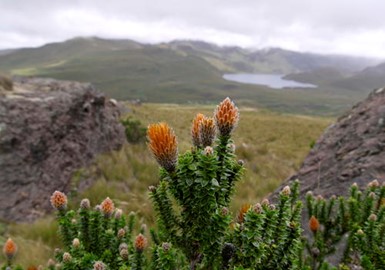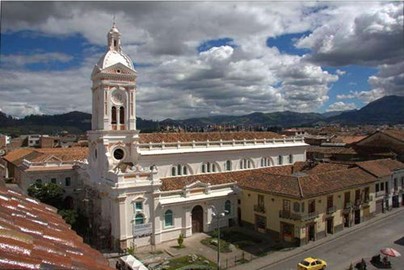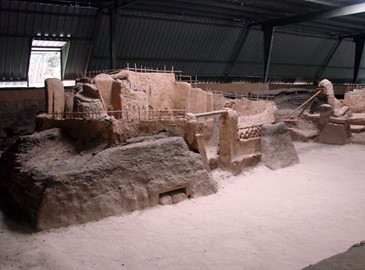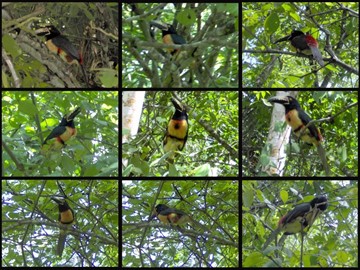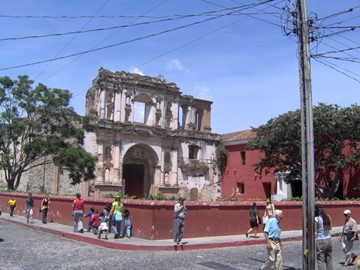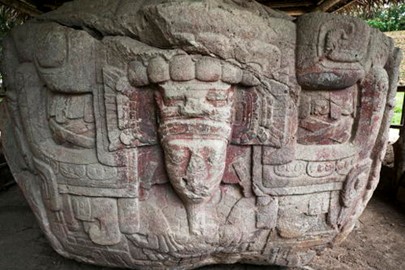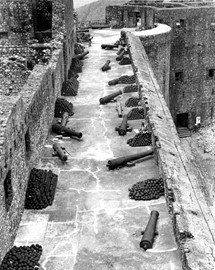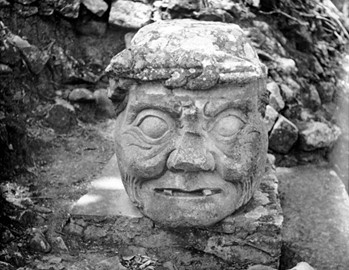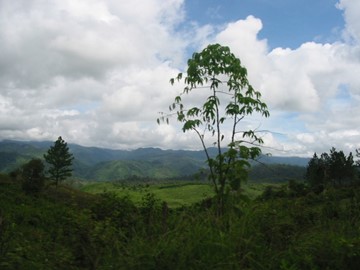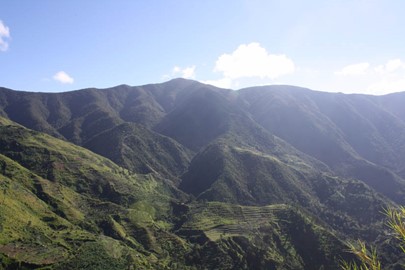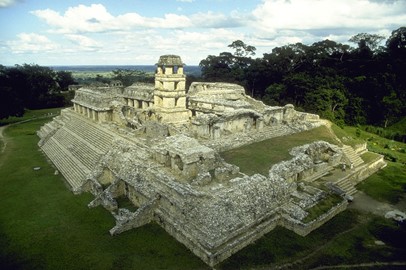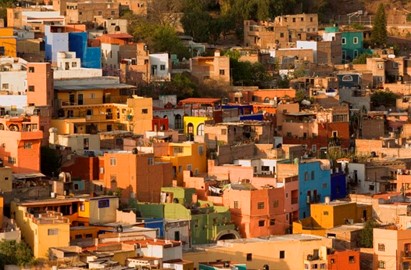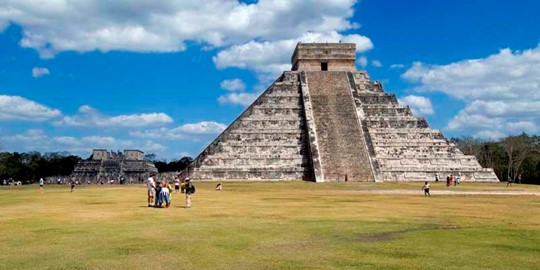region :: latin america and the caribbean
First Coffee Plantations
The First Coffee Plantations, a UNESCO World Heritage site in Cuba, are 19th-century ruins of estates that pioneered coffee production in the Americas. Nestled in lush hills, these sites feature remnants of manor houses, drying platforms, and slave quarters, reflecting the industry’s economic and social history. This landscape preserves a unique blend of agricultural heritage and natural beauty.
Cienfuegos
Cienfuegos, a UNESCO World Heritage site in Cuba, is a 19th-century colonial city renowned for its elegant French-inspired architecture and waterfront charm. Featuring wide boulevards, neoclassical buildings, and a grand theater, it reflects urban planning from Cuba’s sugar boom era. This well-preserved gem offers a glimpse into a refined historical and cultural legacy.
Camaguey
The Historic Centre of Camagüey, a UNESCO World Heritage site in Cuba, is a colonial city known for its labyrinthine streets and vibrant baroque architecture. Founded in the 16th century, it features charming plazas, ornate churches, and clay-tiled rooftops, reflecting Spanish influence. This unique urban layout offers a captivating window into Cuba’s colonial past.
Morne Trois Pitons
Morne Trois Pitons National Park, a UNESCO World Heritage site in Dominica, is renowned for its volcanic landscapes and rich biodiversity. The park features dramatic geothermal attractions like boiling lakes, hot springs, and fumaroles, alongside lush rainforests teeming with rare flora and fauna. Visitors can explore scenic trails leading to stunning waterfalls and panoramic vistas, offering a glimpse into the island’s natural splendor. This protected area stands as a testament to Dominica’s unique geologi... Read More
Santo Domingo
Santo Domingo, a UNESCO World Heritage site in the Dominican Republic, is renowned as the first European settlement in the Americas, founded in 1496 by Bartholomew Columbus. Its historic Colonial City features well-preserved 16th-century architecture, including the Cathedral of Santa María la Menor, the oldest cathedral in the Americas, and the Alcázar de Colón, a former residence of the Columbus family. The site showcases a blend of Spanish colonial influence and Taino heritage, offering a glimpse into the... Read More
Galápagos Islands
The Galápagos Islands, a UNESCO World Heritage site, are a unique archipelago renowned for their extraordinary biodiversity and volcanic landscapes. Famous for inspiring Charles Darwin’s theory of evolution, they host an array of endemic species, including giant tortoises, marine iguanas, and diverse birdlife. The islands serve as a living laboratory for scientific research and conservation efforts, offering visitors a rare glimpse into a pristine natural ecosystem.
Quito
Quito, the capital of Ecuador, is a UNESCO World Heritage site renowned for its well-preserved colonial architecture and rich cultural history. Founded in the 16th century on the ruins of an Inca city, it boasts one of the best-preserved historic centers in Latin America, featuring ornate churches, monasteries, and cobblestone streets. Its location high in the Andes adds to its unique charm, blending indigenous and Spanish influences seamlessly. The city’s cultural significance and historical integrity earn... Read More
Sangay
Sangay National Park, a UNESCO World Heritage site in Ecuador, is renowned for its stunning natural beauty and diverse ecosystems, ranging from tropical rainforests to glaciers. The park features three prominent volcanoes—two active, Sangay and Tungurahua, and one extinct, El Altar—showcasing dramatic landscapes and geological significance. Its isolation has preserved a rich biodiversity, including rare species like the mountain tapir and Andean condor, making it a critical conservation area recognized sinc... Read More
Santa Ana de los Ríos de Cuenca
Santa Ana de los Ríos de Cuenca, a UNESCO World Heritage site in Ecuador, is a well-preserved colonial city founded in 1557, renowned for its historical architecture and cultural significance. Its urban layout, featuring narrow cobblestone streets and whitewashed buildings with red-tiled roofs, reflects a blend of Spanish and indigenous influences. The city’s designation in 1999 highlights its role as a testament to colonial planning and its enduring heritage, making it a key cultural landmark in South Amer... Read More
Joya de Cerén
Joya de Cerén, a UNESCO World Heritage site in El Salvador, is an ancient Maya farming village famously preserved by volcanic ash from an eruption around 600 AD. Often called the 'Pompeii of the Americas,' it offers a rare glimpse into daily life with intact structures, tools, and crops like maize and manioc. Discovered in 1976, this archaeological treasure showcases the resilience and ingenuity of its pre-Columbian inhabitants.
Tikal
Tikal, a UNESCO World Heritage site in Guatemala, is an ancient Mayan city renowned for its impressive pyramids, temples, and palaces that showcase the architectural and cultural achievements of the Maya civilization. Flourishing between 200 and 900 AD, it served as a major political, economic, and religious center, with iconic structures like Temple I and the Great Plaza standing as testaments to its historical significance. Today, Tikal offers a glimpse into the past, drawing visitors to explore its well-... Read More
Antigua Guatemala
Antigua, the capital of the Captaincy-General of Guatemala, was founded in the early 16th century. Built 1,500 m above sea-level, in an earthquake-prone region, it was largely destroyed by an earthquake in 1773 but its principal monuments are still preserved as ruins. In the space of under three centuries the city, which was built on a grid pattern inspired by the Italian Renaissance, acquired a number of superb monuments.
Quirigua
The Ruins of Quiriguá, a UNESCO World Heritage site in Guatemala, are an ancient Mayan archaeological treasure renowned for their intricately carved stelae and zoomorphs. Dating back to the 8th century, this once-thriving city showcases impressive monumental sculptures, including the tallest stone monolith in the Maya world, Stela E, standing over 35 feet. The site offers a glimpse into the region's rich history, art, and culture, preserved amidst a lush tropical setting, making it a significant destination... Read More
Citadel, Sans Souci, Ramiers
The National History Park – Citadel, Sans Souci, Ramiers is a UNESCO World Heritage site in Haiti, recognized for its historical and cultural significance. Dating to the early 19th century, it features the grand Citadel Laferrière, a massive mountaintop fortress, the elegant ruins of Sans Souci Palace, and the fortified Ramiers site, all built after Haiti’s independence. These structures stand as powerful symbols of liberty, constructed by formerly enslaved people who fought for and won their freedom.
Copán
Copán, a UNESCO World Heritage site in Honduras, is an ancient Mayan city renowned for its intricate stone carvings, hieroglyphic stairway, and well-preserved ruins. Flourishing between the 5th and 9th centuries, it served as a major political and cultural center, showcasing advanced architecture and artistry. Today, it offers a glimpse into the sophisticated Mayan civilization, attracting visitors with its historical significance and archaeological treasures.
Río Plátano Biosphere
The Río Plátano Biosphere Reserve, a UNESCO World Heritage site in Honduras, is a biodiverse haven encompassing rainforests, wetlands, and coastal lagoons. It shelters endangered species like jaguars, tapirs, and giant anteaters, alongside vibrant ecosystems supporting countless plant and animal life. The reserve also holds archaeological significance with ancient Mayan ruins, offering a glimpse into the region’s rich cultural history. Conservation efforts aim to protect this ecological and historical treas... Read More
Blue and John Crow Mountains
The Blue and John Crow Mountains, a UNESCO World Heritage site in Jamaica, is a rugged, forested region renowned for its rich biodiversity and cultural significance. This tropical montane rainforest is a hotspot for endemic species, including unique plants, birds, and the giant swallowtail butterfly, while also serving as a historic refuge for indigenous Tainos and Maroons escaping slavery. The site preserves tangible heritage like trails and settlements, alongside intangible traditions such as Maroon music... Read More
Sian Ka'an
Sian Ka'an, a UNESCO World Heritage site in Mexico, is a biodiverse coastal ecosystem encompassing tropical forests, mangroves, marshes, and a section of the Mesoamerican Barrier Reef. Established as a biosphere reserve in 1986, it hosts a wide array of wildlife, including jaguars, manatees, and over 300 bird species, while also preserving ancient Mayan ruins. Its name, meaning 'Origin of the Sky' in Mayan, reflects its cultural and natural significance as a protected sanctuary for both ecological and archa... Read More
Palenque
Palenque, a UNESCO World Heritage site in Mexico, is an ancient Maya city renowned for its well-preserved architecture, intricate carvings, and historical significance. Flourishing between 600 and 800 CE, it features notable structures like the Temple of the Inscriptions, the tomb of King Pakal, adorned with elaborate hieroglyphs and artwork. This archaeological gem offers a window into Maya civilization, showcasing advanced engineering and cultural achievements.
Mexico City and Xochimilco
Mexico City, the vibrant capital of Mexico, is a bustling metropolis known for its rich history, cultural landmarks, and dynamic urban life. Within this sprawling city lies Xochimilco, a UNESCO World Heritage site famous for its ancient canal system and colorful trajineras (traditional boats). This historic borough, dating back to pre-Columbian times, offers a unique blend of natural beauty and cultural heritage, with its floating gardens and lively markets attracting visitors from around the world. Togethe... Read More
Teotihuacan
Teotihuacan, a UNESCO World Heritage site in Mexico, is an ancient Mesoamerican city renowned for its massive pyramids, including the Pyramid of the Sun and Pyramid of the Moon, built between the 1st and 7th centuries CE. This archaeological marvel features a well-planned urban layout with residential complexes, temples, and the Avenue of the Dead, reflecting the sophisticated culture of its mysterious inhabitants. Abandoned centuries before the Aztec arrival, its origins and decline remain enigmatic, makin... Read More
Oaxaca and Monte Albán
Oaxaca and Monte Albán, a UNESCO World Heritage site in Mexico, showcase a rich blend of indigenous Zapotec and Mixtec cultures alongside colonial Spanish influences. Monte Albán, an ancient ceremonial center perched atop a flattened hill, features impressive pyramids, plazas, and intricate stone carvings dating back to 500 BCE. Oaxaca City, the nearby cultural hub, charms with its vibrant markets, colorful architecture, and traditional cuisine, including renowned mole sauces. Together, they offer a concise... Read More
Puebla
The Historic Centre of Puebla, a UNESCO World Heritage site in Mexico, is renowned for its well-preserved colonial architecture, blending Spanish and indigenous influences. Founded in 1531, it features notable landmarks like the Puebla Cathedral, one of the country’s largest, and vibrant Talavera-tiled buildings. Its urban layout, with a grid pattern radiating from the central plaza, reflects 16th-century planning. The site’s cultural significance and historical charm make it a key example of Mexico’s colon... Read More
Guanajuato
Guanajuato, a UNESCO World Heritage site in Mexico, is renowned for its rich colonial history, vibrant culture, and stunning architecture. This picturesque city features colorful buildings, winding cobblestone streets, and historic silver mines that once fueled its prosperity. Notable landmarks include the iconic Basilica of Our Lady of Guanajuato and the eerie yet fascinating Mummy Museum. Its unique underground street system and lively festivals, like the Cervantino International Festival, further enhance... Read More
Chichen Itza
Chichen-Itza, a UNESCO World Heritage site, is an ancient Mayan city renowned for its impressive architecture and historical significance. The site features the iconic El Castillo pyramid, a testament to Mayan astronomical knowledge with its 365 steps representing the days of the year. Other notable structures include the Great Ball Court and the Temple of the Warriors, reflecting the city's cultural and political importance during its peak between the 7th and 13th centuries. Today, it stands as a well-pres... Read More

